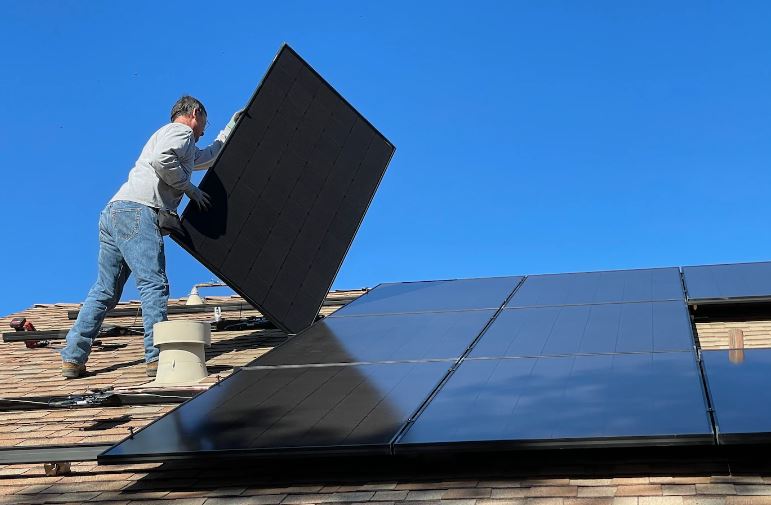Ground Mount Solar for Disaster Preparedness: A Resilient Energy Solution
The world is no stranger to natural disasters, from hurricanes and earthquakes to wildfires and prolonged power outages. In such calamities, access to a reliable power source becomes paramount. This is where ground-mounted solar panels, coupled with energy storage solutions, shine as a beacon of hope and resilience. This article will explore how ground-mounted solar systems are emerging as a dependable energy source during emergencies and disasters.
Contents [hide]
The Vulnerability of Traditional Power Sources
Before delving into the specifics of ground-mounted solar systems, it’s essential to understand why traditional power sources are often vulnerable during disasters. When natural disasters strike, the conventional power grid can face several challenges:
- Infrastructure Damage: Hurricanes, earthquakes, and severe storms can cause extensive damage to power lines, transformers, and substations, leading to widespread outages.
- Fuel Supply Interruptions: Natural disasters can disrupt the supply chains of fossil fuels like coal, natural gas, and diesel, impacting the operation of power plants and backup generators.
- Evacuations and Safety: In some situations, utility workers may need to evacuate, delaying restoration efforts and leaving communities without power for extended periods.
- Communication Breakdown: Power outages can hamper communication, making it challenging for authorities to coordinate disaster response efforts effectively.
Ground-Mount Solar as a Disaster-Resilient Energy Source
Ground-mounted solar panels, often installed on the property but separate from the main dwelling, have gained attention as a disaster-resilient energy source. Here’s why they are emerging as a dependable solution:
- Durability: Ground-mounted solar panels are less vulnerable to wind damage than rooftop installations. They can be designed to withstand strong winds and extreme weather conditions.
- Accessibility: During disasters, access to rooftops for maintenance or repair may be limited or hazardous. Ground-mounted systems are more accessible for inspection and maintenance.
- Continuous Power: When paired with energy storage solutions like batteries, ground-mounted solar systems can provide a constant source of electricity even when the grid is down.
Components of a Disaster-Prepared Ground Mount Solar System
To understand how ground-mounted solar systems offer disaster preparedness, it’s crucial to know their key components:
- Ground-Mounted Solar Panels: These panels are installed on racks or frames mounted on the ground. They capture sunlight and convert it into electricity.
- Energy Storage Solutions: Batteries are a vital component of a disaster-prepared system. They store excess energy generated by the solar panels during daylight hours for use during nighttime or power outages.
- Inverters and Charge Controllers: Inverters convert the direct current (DC) electricity produced by solar panels into the alternating current (AC) used in homes. Charge controllers manage the charging and discharging of batteries.
- Backup Generator (Optional): Some disaster-prepared systems may include a backup generator powered by propane or natural gas. These generators can provide additional power during extended outages or when batteries are depleted.
Planning and Sizing a Disaster-Prepared Ground Mount Solar System
Proper planning and sizing are essential to ensure your ground-mounted solar system meets your energy needs during disasters. Factors to consider include:
- Energy Assessment: Start with a thorough assessment of your energy needs, considering the duration of potential outages and essential appliances or medical equipment that require power.
- System Capacity: Determine the appropriate system capacity for solar panel wattage and battery capacity to meet your energy requirements.
- Available Space: Evaluate the open space for ground-mounted solar panels, ensuring they receive optimal sunlight throughout the day.
Installation and Safety Considerations
Installing a disaster-prepared ground-mount solar system requires careful planning and professional expertise. Considerations include:
- Roof Preparation: Ensure the chosen location for solar panels is clear of obstructions, debris, and vegetation. Any necessary site preparation should be conducted before installation.
- Safety Measures: Safety is paramount during installation. Adhere to local building codes and safety standards, and consider using anchoring systems to secure panels in high-wind areas.
Remote Monitoring and Maintenance
Modern ground-mounted solar systems often include remote monitoring capabilities. These systems allow users to remotely check their solar system’s performance, battery charge levels, and overall health. Regular maintenance tasks should include:
- Cleaning: Keep solar panels free of dirt, debris, and snow, as this can improve their efficiency.
- Battery Health: Monitor battery charge levels and perform maintenance as the manufacturer recommends.
Benefits of Disaster-Prepared Ground Mount Solar Systems
The advantages of implementing a disaster-prepared ground mount solar system are significant:
- Continuous Power Supply: These systems can provide a constant source of electricity during power outages, ensuring you can keep essential appliances and devices running.
- Reduced Reliance on External Sources: Disaster-prepared systems reduce your dependence on external sources of power, making you more self-reliant during emergencies.
- Potential Cost Savings: Solar energy can result in significant cost savings on energy bills over time, making it a financially sound investment.
Community and Government Initiatives
Many communities and governments are actively promoting adopting disaster-prepared ground-mount solar systems. Financial incentives, support programs, and partnerships with local utilities make these systems more accessible to a broader audience.
Conclusion
In conclusion, when coupled with energy storage solutions, disaster-prepared ground-mounted solar systems offer a resilient power source during emergencies and natural disasters. As climate-related events become more frequent and unpredictable, these systems are increasingly valuable for safeguarding homes, communities, and critical infrastructure against power disruptions. By investing in a disaster-prepared solar system, individuals and communities take a proactive step toward greater energy independence and resilience in the face of adversity.




